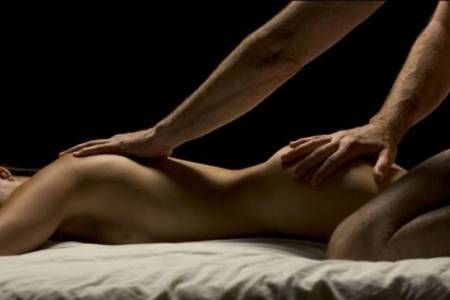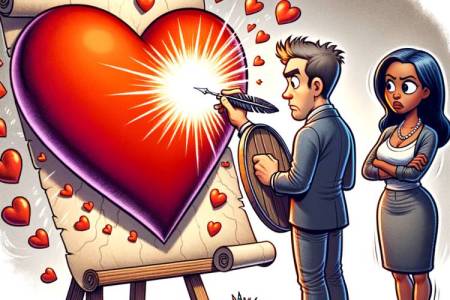Homosexuality in History: The Journey to Acceptance and Equality
Homosexuality is an integral part of human history, yet its path to acceptance and understanding has been fraught with struggle and suffering. In this article, we will explore how homosexuality was perceived across different eras and cultures, and the steps that led to the current state. We will delve into personal stories, historical events, and studies that reveal the fascinating and often painful journey of the LGBTQ+ community toward equality.
Ancient Cultures: Acceptance and Integration
In some ancient cultures, homosexuality was a common and accepted part of society.
Ancient Greece
In Greece, homosexuality was not only tolerated but often celebrated. Famous couples like Achilles and Patroclus were depicted in literature as paragons of love and friendship. For me, an interesting fact is that in Sparta homosexuality among soldiers was viewed as a way to strengthen cohesion and loyalty among warriors. One of the most notable and controversial aspects of Greek homosexuality was pederasty—a relationship between an adult man (erastes) and a young boy (eromenos). These relationships had established rules and were seen as an important part of educating and mentoring young men. The erastes would teach the boy not just military and athletic skills but also virtues and values.
Ancient Rome
In Rome, homosexuality was also common, though more regulated by social norms and laws. Relationships between men were acceptable as long as they did not undermine family and social structures. Roman society placed a high value on masculinity and power. In a homosexual relationship, a man could be viewed as either the "active" (dominant) or "passive" (submissive) partner. The active role was generally accepted and associated with masculinity, whereas the passive role was often stigmatised and linked to a loss of social status. Emperor Augustus enacted laws to promote traditional family values and limit libertine behaviour, including homosexuality. This moral reform was a reaction to perceived moral decline and aimed to strengthen Roman society through stricter ethical norms.
The Dark Ages: Persecution and Secrecy
With the rise of Christianity and the consolidation of church power, attitudes toward homosexuality changed dramatically.
The Middle Ages
Homosexuality was harshly punished and considered sinful. Those caught engaging in homosexual acts faced severe penalties. Christian doctrine viewed homosexuality as a grave sin. St. Augustine and other church fathers preached that any sexual activity not aimed at reproduction was against divine law. This perspective led to strict laws and harsh penalties for those caught engaging in homosexual acts. As mentioned, people accused of homosexuality faced severe punishments, including fines, public whipping, and often death. Homosexual acts were also frequently punished by burning at the stake or hanging.
The Renaissance
Although the Renaissance sparked renewed interest in art and science, homosexuality remained taboo. The renowned artist Leonardo da Vinci was accused of homosexual practices, illustrating the dangers LGBTQ+ individuals faced even in culturally progressive times. The Renaissance brought a new wave of artistic creation that often celebrated human beauty and physicality, including homosexual themes. Artists and writers such as Leonardo da Vinci, Michelangelo Buonarroti, and William Shakespeare produced works with homoerotic undertones or drew inspiration from their personal experiences. Interesting fact: Shakespeare used complex metaphors and symbolism to express homosexual themes. His sonnets often include motifs of love and admiration for young men. However, despite some cultural loosening, legal and social repression continued. In many European countries, homosexual practices remained criminalised. For instance, in England, "sodomitic" acts were punishable by death until the late 19th century.
Modern Era: The Fight for Equality
The 20th century marked a turning point in the struggle for LGBTQ+ rights.
The Stonewall Riots
In 1969, a pivotal moment occurred in New York when patrons of the Stonewall Inn, a gay bar, stood up to police harassment. This incident is considered the beginning of the modern LGBTQ+ movement and led to a wave of demonstrations and protests worldwide.
Legalisation of Homosexuality
Gradually, homosexuality was decriminalized in many countries. For example, in 1997, homosexuality was finally legalized in the Czech Republic, and since then, a number of legislative changes have improved the status of the LGBTQ+ community.
A 2012 study published in the Journal of Personality and Social Psychology found that societal acceptance of homosexuality is closely linked to higher levels of education and liberal attitudes.
Research from 2019 conducted by the University of California showed that children raised by same-sex couples perform just as well in school and have social skills comparable to those from heterosexual families. This refutes prejudices and stereotypes about the unsuitability of same-sex parenting.
Personal Experiences: Voices from the Community
Peter, 45, shares his story: "Growing up in the 1980s, being gay was something never discussed. It was difficult; I felt isolated and misunderstood. Today, I'm happy to be myself, and my children are growing up in a much more open and friendly society."
Jane, 30, says: "Coming out was a huge step for me. I was afraid of how my family and friends would react. Fortunately, I found the support and love I needed. Today, I work for an organization that supports LGBTQ+ youth and strive to ensure no one feels as alone as I did."
Homosexuality has a rich and often complex history. The journey to acceptance and equality has been full of obstacles and struggles, but each step forward brings greater openness and justice for all. Remembering the past and actively supporting the LGBTQ+ community today is key to creating a world where everyone can live authentically and without fear.

 Tongue Tornado
Tongue Tornado 














Comments (0)
Facebook Comments (0)